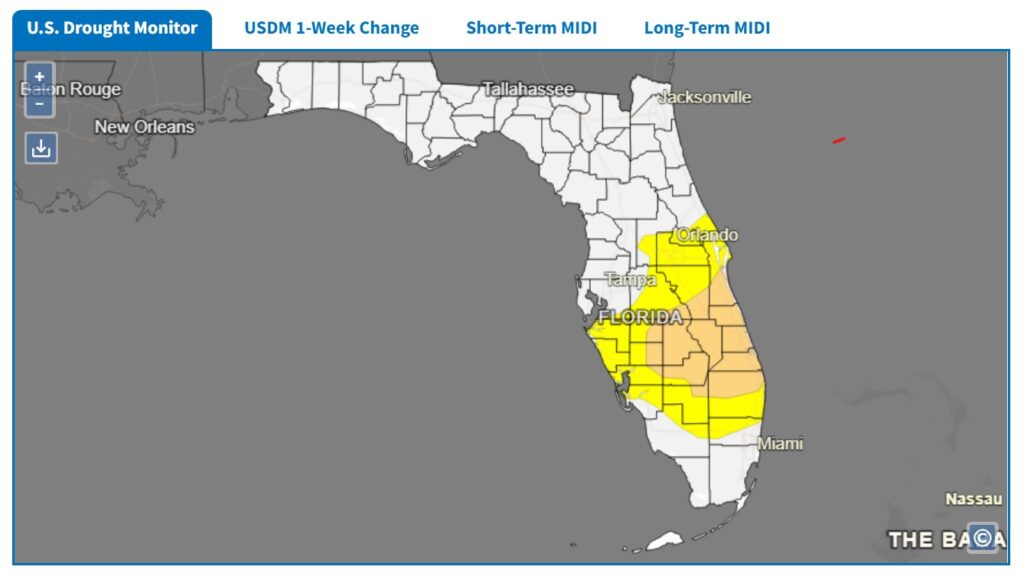Despite recent rains, portions of Northeast Florida remain drier than normal, and it’s a good time to conserve water, according to the St. Johns River Water Management District.
April marked the third consecutive month of below-average rainfall for some of the 18 counties in the district. Average rainfall in April was 2.14 inches, 0.47 inches below the monthly average.
Rainfall totals in April ranged from a high of 3.79 inches in Nassau County to 0.56 inches in the southern end of the district, which is considered “abnormally dry,” said Timothy Miller, bureau chief for the district water resources division.
Many of driest areas are south of the First Coast, but April brought lower rainfall in the Jacksonville area as well, hence some of the drier-looking lawns, Miller said.
Duval County typically receives 2.62 inches of rainfall in April, but this year brought only 1.93 inches. Nassau County received the most rainfall in Northeast Florida — almost an inch more than normal.
Groundwater levels across the district remain well above drought levels, with most areas within the normal range, Miller said. But as spring temperatures rise in summer, plants and grass will draw more groundwater.

The water management district strongly encourages everyone to be mindful of their water usage during these drier months.
“Until we start getting those more regular summertime rainfalls, when we get into springtime and there’s normally lower rainfall, we end up with drier conditions,” Miller said. “It is not atypical for this season.”
To conserve water:
- Run washing machines and dishwashers only with full loads.
- Thaw frozen food in the refrigerator or microwave, not under running water.
- Install high-efficiency showerheads, faucets and toilets.
- Repair leaks in irrigation systems.
- Follow spring and summertime watering restrictions. Water before 10 a.m. or after 4 p.m. on Wednesdays and Saturdays for odd numbered addresses, and Thursdays and Sundays for even numbered addresses. Commercial property owners can water on Tuesdays and Fridays.
The St. Johns River Water Management District covers more than 12,000 square miles of North and Central Florida along the St. Johns River ,including all or parts of Alachua, Baker, Bradford, Brevard, Clay, Duval, Flagler, Indian River, Lake, Marion, Nassau, Okeechobee, Orange, Osceola, Putnam, St. Johns, Seminole and Volusia counties. The agency focuses on ensuring a long-term supply of drinking water and maintaining the health of the bodies of water in the region.

According to the National Integrated Drought Information System, 1.8 million Florida residents are in areas of drought, up 16.7% since last week. But the U.S. Drought Monitor shows those areas are in an area from Orlando and south to Miami, covering just over 33% of the state.
This comes after the 50th wettest March on record statewide, with almost 4 inches of total rain, up 0.27 inches from normal.







